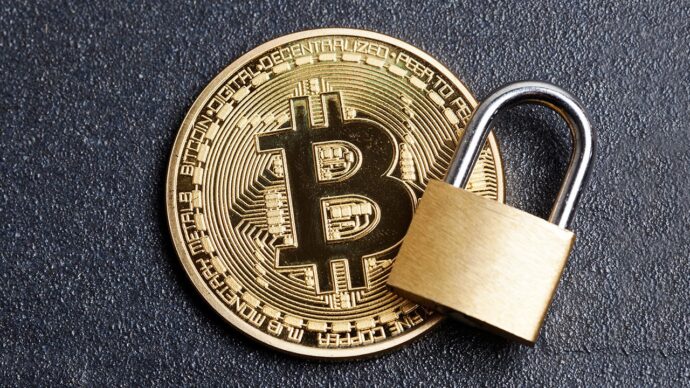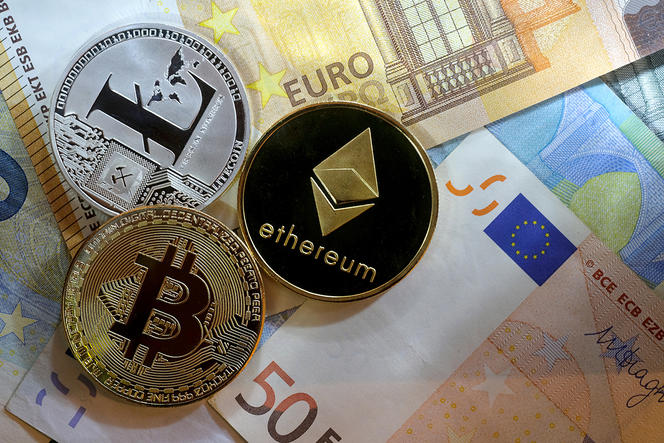Since Bitcoin came into the picture in 2009, the popularity of cryptocurrency has been rising exponentially. This transition into a cashless society and digital economy has sparked a debate on the future of traditional or fiat currency.
While most people still prefer fiat currency over crypto, the latter is viewed as an excellent investment opportunity. With global merchants, consumers, and entrepreneurs normalizing the adoption of reliable cryptos like Bitcoin and Ethereum, the differences and benefits posed by the two currency types are becoming evident, as discussed below.
Key Differences: Crypto vs Traditional Currency

1. Network Structure
Traditional currency also referred to as fiat currency refers to any government-issued currency. Most paper currencies we see today, including dollars, euros, and rupees, are types of fiat currency.
This type of currency is controlled and managed by the government body in charge of issuing it, like a country’s central bank. Its monetary value is dependent on factors like the financial policies and stability of the government that backs the currency.
At its core, cryptocurrency is a digital or virtual currency that is secured by a decentralized structure like blockchain technology. Since they’re not issued and backed by any central authority like the government, their value and management depend solely on the respective crypto platform.
It has an electronic form of encryption that protects transactions on its network from being susceptible to counterfeiting or fraud. Examples of cryptocurrencies include Ethereum, Bitcoin, Ripple, and Dogecoin.
2. Transaction Speed

The transfer of traditional currency from one account to the other depends on several variables, including the amount, mode of transfer, and location of both parties involved. If we consider the U.S. as an example, most transactions at financial institutions like banks take about three to five working days to be complete.
While wire transfers may take about 24 hours to be completed, international transfers may sometimes take days and sometimes even weeks due to the variables involved. On the other hand, cryptocurrency transactions from one crypto wallet to another, are typically completed within a matter of a few minutes.
Once the block or node that has your transaction is verified by the network, all funds are available to be used immediately. The entire process happens almost in a flash with the only variable being your network speed.
3. Accessibility and Transparency
Banking systems that deal with fiat currency typically function only for five to six days a week and have fixed hours. Also, to open an account at these financial institutions several steps like ID verification, credit checks, and background checks need to be conducted which can take several days.
Compared to this, setting up a crypto wallet is an easy task, since you don’t have to go through the regulations set up by a centralized authority. This decentralized structure opens many avenues for those who are either unwilling or unable to use traditional banking systems for financial transactions.
4. Market Opportunities and Inflation

Portfolio assets like stocks or bonds involving traditional currency are subject to inflation, ineffective monetary or government policies, and value erosion. Under ideal circumstances, fiat currency is usually stable, which allows investors to diversify their portfolios and trade in fixed deposits, bonds, or stocks.
The cryptocurrency market is known for its volatile nature. Although, it is this volatility that presents a unique opportunity for investors to diversify their portfolios and reap significant profits.
Cryptocurrency functions independently from markets, which means that the value of crypto tokens is determined by the cap on minting set up the respective crypto blockchain. Since there is a cap on supply, crypto is protected from aspects like inflation.
In addition, novice investors who have basic knowledge of the crypto market can invest in these tokens, to trade profitably. Platforms like CryptosTrader provide insights and features like automated trading, for a seamless investment opportunity.
5. Transaction Costs
Fiat currency transfers often require the utilization of third-party platforms and intermediaries for a smooth sailing transaction. This is why you’ll be charged an additional transaction fee for your wire transfer, depending on the currency conversion rates, location, and amount.
Since cryptocurrency transfers take place through a decentralized network, the transaction fees are often less hefty, even for international transfers. The transaction fees depend on the network congestion and demand on the blockchain, but it is still significantly lower than that of traditional currency.
6. Privacy and Security

When you use fiat currency for transactions, you’ll have to provide personal details including name, address, phone numbers, and other details as prompted. If there is a data breach by hackers or scammers, it is likely that your confidential information will be misused.
In some countries, the central government entities and financial institutions offer insurance and other forms of asset protection. There are also laws in place that protect customers from cybercrimes and scams, making it easier to recover funds if there’s a breach.
In cryptocurrency, all your transactions are secured by the nature of the blockchain network itself, making it super secure. All of your verified transactions are anonymous and the details are stored on a public ledger where your confidential information is kept private.
While this transparency keeps your personal details private, it also allows authorities to take action and keep a check on fraudulent activity. Anyone can prove the sent money or received it, with the help of the public distribution ledger.
Any attempt to hack this blockchain system will require immense computing power to confirm several blocks or nodes. Another feature is that each crypto wallet has a unique address that can be used to trace and identify any transaction if there is a breach.
Final Words
As society is adopting cashless mediums, reliable cryptos like Bitcoin are being utilized heavily. While many differences exist between the two currency types, the most notable difference between them is the centralization of the network structure.
There are several benefits that cryptocurrency offers over traditional currency and other asset classes like gold. Both currency types have their advantages and disadvantages, which gives consumers an opportunity to select one that suits their preferences and needs.















